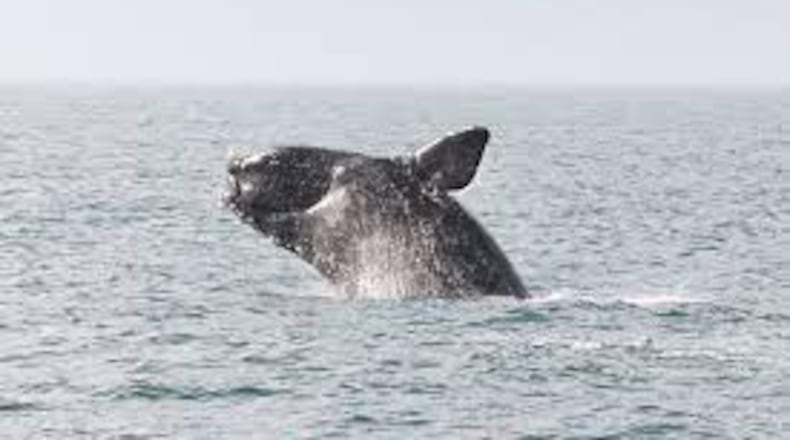SAVANNAH — Just like on the road, speed limits on the water are only effective when enforced.
Statistics show a crackdown on violators of a long-abused speed restriction in place off the East Coast is boosting compliance. The speed zones encompass the calving grounds of the North Atlantic right whales, waters the endangered species shares with cargo ships entering and exiting the Port of Savannah and Port of Brunswick shipping channels.
The federal government’s environmental science agency, the National Oceanic and Atmospheric Administration, recently launched a vessel traffic dashboard showing a plus-70% compliance rate with the speed limits in November and December in the Southeast region, which includes the Georgia Ports Authority facilities. Big pleasure boats, not cargo ships, were responsible for the majority of violations.
Compare those returns with statistics from 2017 to 2022, when less than 20% of ships subject to the speed limit — vessels 65 feet and longer — were in compliance.
Credit: Georgia Port Authority via AP
Credit: Georgia Port Authority via AP
The improvement comes as NOAA considers expanding speed limits in the whale calving zone to include boats measuring 35 feet and above, including river pilot vessels and other crafts that support cargo ships. An apparent collision between a boat and a right whale calf earlier this month has refocused attention on the dangers facing the endangered species in the waters off Georgia’s coast.
NOAA is reviewing the speed limit change, which is opposed by maritime industry officials and federal lawmakers such as U.S. Rep. Buddy Carter, a Republican who represents the Georgia coast. Carter has introduced legislation to stall implementation of the expanded rules.
In the meantime, NOAA’s enforcement arm is expanding resources to better police the 65-foot-plus vessels. The agency employs both shore-based and boat-based radar to monitor ships and has issued 72 citations in the past three years. Additionally, NOAA has sent about 1,000 warning and notice letters to vessel owners since 2018 and has developed a near-real time alert system to notify ships operating in close proximity to right whales.
“NOAA Fisheries and our partners are dedicated to conserving and rebuilding the North Atlantic right whale population,” a NOAA spokeswoman said in a written statement.
Fines levied against speed limit violators in the past two years exceeded $1 million, or $16,656 per violation. Right whale advocates say the penalty is too low to discourage cargo ship speeders, and they favor steeper penalties. Shipping companies must often pay penalties for late deliveries, and paying a speeding fine is “part of the cost of doing business” in many instances, said Gib Brogan with Oceana, an environmental group focused on the world’s oceans.
Watchdogs such as Brogan are focused on the calving grounds off the Georgia and South Carolina coasts because of how far shipping channels extend into the ocean. Savannah’s 47-foot-deep trench is 40 miles long, including 16 miles in the open ocean. The route takes cargo ships that measure up to 1,300 feet long directly through waters that double as a right whale maternity ward from November through April each year.
A 2020 NOAA report noted the risks, “given the higher levels of transit distance and longer entrance channels into these busy ports.”
“The government has said to achieve the goals of protecting whales we need 100% compliance,” Brogan said.
About the Author
Keep Reading
The Latest
Featured




